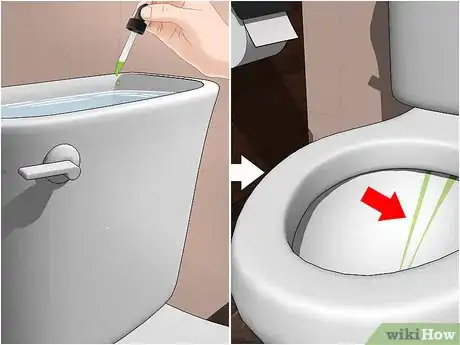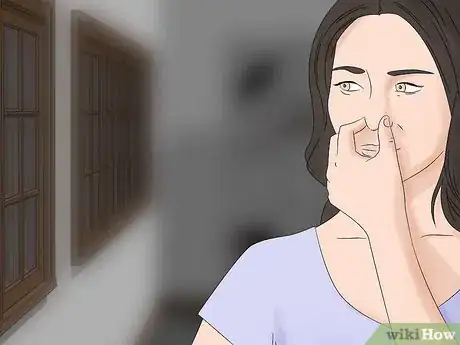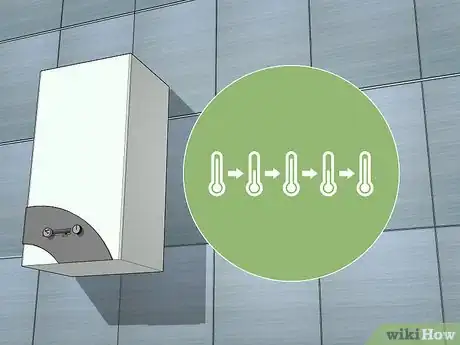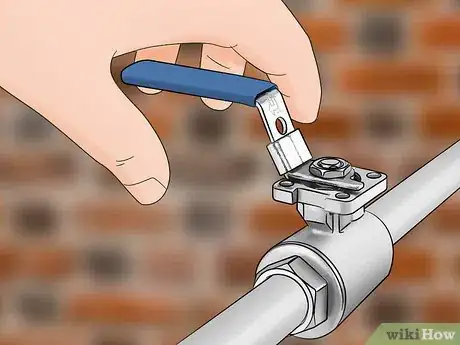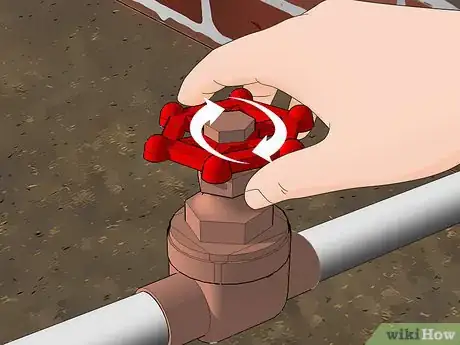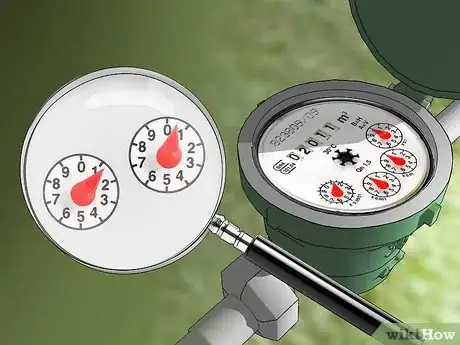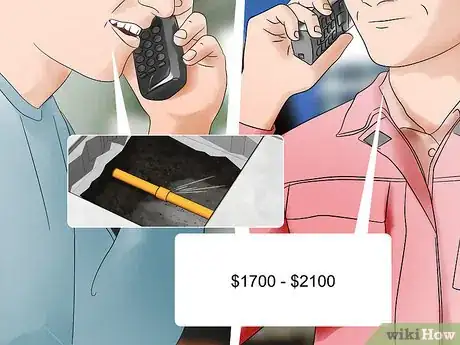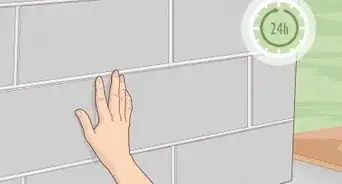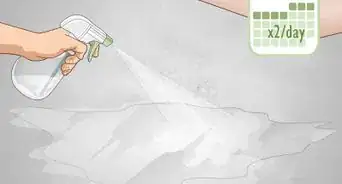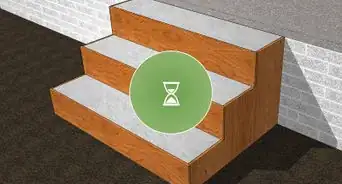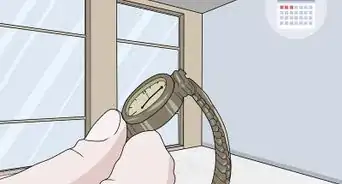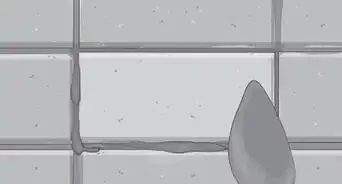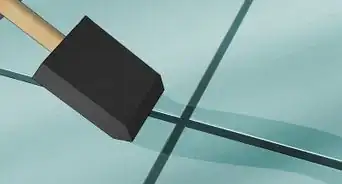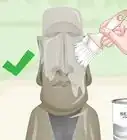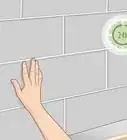This article was co-authored by David Balkan. David Balkan is a Professional Plumber, CEO of Balkan Sewer and Water Main Service, and President of Balkan Sewer and Drain Cleaning. As a hands-on owner of these companies for over 40 years, David is knowledgeable about water service lines, sewers, and drain line issues. David is a Committee Chairman of the Master Plumbers Council and has sat on the Executive Committee of the Sub Surface Plumbers Association of New York for over 30 years. His knowledge and solution-oriented approach contributed to Balkan Sewer and Water Main Service being the largest and most trusted service in New York City and the recipient of the 2017 Angie’s List Super Service Award.
There are 12 references cited in this article, which can be found at the bottom of the page.
wikiHow marks an article as reader-approved once it receives enough positive feedback. In this case, 91% of readers who voted found the article helpful, earning it our reader-approved status.
This article has been viewed 145,276 times.
Over time, the pipes underneath your house may wear out and stark to leak. While this won’t create damage right away, these slab leaks can lead to incredibly high water bills and pricey problems down the road. Before spending money on a plumber, though, you can check for a leak using a number of simple methods.
Steps
Looking for Signs of Damage
-
1Watch out for a major water bill spike. In most cases, the first indication that your underground pipes are leaking will come from your water or sewer bill. If you see a massive price spike from one month to the next, or if your bill increases each month despite your water usage staying the same, you may be dealing with a leaky pipe.[1]
- You can also check your water meter—if your meter is spinning and you're not using any water in the house, either your toilet is running or you have a water leak somewhere.[2]
-
2Check for leaky appliances. Some water bill spikes are caused by leaky appliances, especially toilets, so check them first. To check for a toilet leak, add some food coloring to the tank and let it sit for 10 minutes. If the coloring moved to the bowl, you have a toilet leak. For a faucet or water-based appliance, look for pooling or dripping water around the appliance itself or the connected pipes.[3]Advertisement
-
3Look for pools of water, damp carpet, or warped wood floors. Slab leaks create water build-ups underneath your concrete foundation. To escape, this water may pool on top of your floors, yard, or the concrete itself. If you have carpeted floors, search for areas that look darker or are unexpectedly damp. If you have wood panel floors, watch out for spots where the wood starts to warp.[4]
-
4Sniff out mold or mildew patches. When water sits for a long time, it creates a perfect environment for mold and mildew to grow. Though you most likely won’t be able to see it, be aware of areas in your house that smell musty of funky for a long period of time. Mold and mildew are most likely to grow under carpet or, if the water leak spreads, behind drywall.[5]
-
5Take note if your water fixtures become less powerful. High water pressure is what lets sinks, bathtubs, and showers provide you with plenty of water for your everyday needs. If they suddenly become less powerful, providing smaller or weaker streams, a leaky pipe may be to blame.[6]
- To check if your fixtures are less powerful, turn off every water-based appliance in the house and test the stream from a single faucet.
-
6Check if your hot water heater is always on. If your hot water heater is running most, if not all, of the time, it may indicate that you have a hot water leak under your concrete. Because hot water is constantly escaping, your heater is working overtime to warm up the new water.[7]
- If there are no other signs of a slab leak, look for indications that the water heater itself is broken, such as muddy water or loud cracks coming from the tank.
-
7Feel your floor for warm spots. Walk around with bare feet and feel for areas of the floor that are abnormally hot. These will be particularly pronounced on tile or wood floors. If you find one, mark the area with masking tape. If the spot stays hot for over 24 hours, it might be over a broken hot water pipe.[8]
- If you own a cat, check any areas where it likes to sleep. Cats look for warm spots to curl up on, and their favorite spot may be directly over a hot water leak.
-
8Watch out for foundation cracks indicating a sewer leak. Though most slab leaks are from fresh water pipes, sewer pipes are occasionally to blame. When these pipes break, water escapes to the surface and causes the foundation to crack or warp. Common indications of sewer leaks include:[9]
- Cracks in your floor, tiles, bricks, or moldings.
- Rotated, bowed, or separated walls.
- Uneven or warped floors.
- Doors or windows that won’t close or have separated from the house.
Testing for a Water Leak
-
1Turn off your faucets and other water appliances. So you can check your water meter for signs of a leak, turn off every faucet in your house and make sure common water appliances like your washing machine and dishwasher are not on. If anything remains on, cutting off your water may damage them or your water meter may give you a false positive reading.[10]
-
2Find your main water shut-off valve. In cold regions, look for the valve inside your house in places like the basement or garage. In warmer areas, the valve may be located on a pipe on the side of the house or in the ground near your water meter.[11]
-
3Cut off water to your house. If your water valve has only one visible valve wheel, turn it clockwise to shut off your water supply.[12] If you water valve has two visible valve wheels, turn off the one closest to your house and leave the other wheel, connected to the street-side valve, alone.[13]
- Try turning on a faucet far away from the water valve to make sure the water is cut off.
- If you have older pipes, your valve may leak or creak when turned off.
-
4Find your house’s water meter. Look for a water meter inside your yard or by the sidewalk surrounding your house. Typically, it will be inside an iron box or covered by a metal plate. Modern water meter boxes are typically labeled as such for clarity. If you can’t find your water meter, call your local public facilities office for advice on where water meters in your area are typically located.[14]
-
5Remove the water meter cover. Some water meter covers can be simply picked up by hand or pried off with a screwdriver, pair of pliers, or crowbar. Others may have a standard or pentagon nut holding them down, in which case you’ll need a standard or pentagon wrench to remove them.[15]
- If you haven’t examined your meter for a while, watch out for cobwebs and bugs.
- For safety, wear thick working gloves when prying off the cover.
-
6Check the water meter for activity. Though water meters are all built differently, they will each have a method of tracking water usage. This may be in the form of a sweep hand (a clock-like hand covering the meter), a leak indicator (a small triangle, sailing wheel, or other object), or an odometer (a row of numbers). With your appliances off, see if your pipes are leaking by looking for:[16]
- A sweep hand that, over the course of several minutes, moves dramatically.
- A leak indicator that won’t stop turning.
- An odometer whose numbers continue to increase.
Hiring a Plumber
-
1Search online for local plumbers. Most slab leaks can only be fixed by breaking concrete, so look for general contractors that specialize in remedial plumbing. If possible, go with a plumber that lists slab leak detection or repair directly on their website, indicating that they have experience. Expect to pay around $65 per hour or a set price based on the specific job.[17]
- Hourly contractors may be cheaper for small fixes, but they can cost significantly more if the plumber encounters unexpected problems.
- If you can’t find good plumbers online, ask friends, family members, and neighbors for personal recommendations.
-
2
-
3Ask for a repair estimate. Once you confirm that the problem is a slab leak, ask your plumber for a repair estimate. The estimate will depend largely on your specific problem, but expect a standard repair to cost around $2000. To ensure that the price doesn’t change, make sure you get the estimate in writing.
-
4Compare the estimate with other offers. Before committing to a plumber, call other plumbing companies and ask for repair estimates. Since you’ve already had the leak examined, simply relay the problem as it was described to you. Once you have multiple estimates, choose a plumber that seems reputable and offers their services at a reasonable price.
- Though the lowest offer may seem enticing, make sure it’s from a plumber that has a legal operating license and good user reviews online.
-
5Pay to have your pipes repaired. Though pricey, pay for the slab leak repairs as soon as possible. Slab leaks can cause far more expensive problems down the road, and a little money now can save a lot going forward.
- Some homeowner’s insurance policies cover the cost of essential pipe repairs.
Expert Q&A
-
QuestionWhat's the cheapest way to fix a leak under a slab?
 David BalkanDavid Balkan is a Professional Plumber, CEO of Balkan Sewer and Water Main Service, and President of Balkan Sewer and Drain Cleaning. As a hands-on owner of these companies for over 40 years, David is knowledgeable about water service lines, sewers, and drain line issues. David is a Committee Chairman of the Master Plumbers Council and has sat on the Executive Committee of the Sub Surface Plumbers Association of New York for over 30 years. His knowledge and solution-oriented approach contributed to Balkan Sewer and Water Main Service being the largest and most trusted service in New York City and the recipient of the 2017 Angie’s List Super Service Award.
David BalkanDavid Balkan is a Professional Plumber, CEO of Balkan Sewer and Water Main Service, and President of Balkan Sewer and Drain Cleaning. As a hands-on owner of these companies for over 40 years, David is knowledgeable about water service lines, sewers, and drain line issues. David is a Committee Chairman of the Master Plumbers Council and has sat on the Executive Committee of the Sub Surface Plumbers Association of New York for over 30 years. His knowledge and solution-oriented approach contributed to Balkan Sewer and Water Main Service being the largest and most trusted service in New York City and the recipient of the 2017 Angie’s List Super Service Award.
Professional Plumber & CEO of Balkan Sewer & Water Main If you're sure you know where the leak is, in most cases it's easiest to just re-pipe above the floor. Then, you can just leave the old pipe under the floor so you don't have to break up the slab.
If you're sure you know where the leak is, in most cases it's easiest to just re-pipe above the floor. Then, you can just leave the old pipe under the floor so you don't have to break up the slab. -
QuestionHow do you know if you have a leak?
 David BalkanDavid Balkan is a Professional Plumber, CEO of Balkan Sewer and Water Main Service, and President of Balkan Sewer and Drain Cleaning. As a hands-on owner of these companies for over 40 years, David is knowledgeable about water service lines, sewers, and drain line issues. David is a Committee Chairman of the Master Plumbers Council and has sat on the Executive Committee of the Sub Surface Plumbers Association of New York for over 30 years. His knowledge and solution-oriented approach contributed to Balkan Sewer and Water Main Service being the largest and most trusted service in New York City and the recipient of the 2017 Angie’s List Super Service Award.
David BalkanDavid Balkan is a Professional Plumber, CEO of Balkan Sewer and Water Main Service, and President of Balkan Sewer and Drain Cleaning. As a hands-on owner of these companies for over 40 years, David is knowledgeable about water service lines, sewers, and drain line issues. David is a Committee Chairman of the Master Plumbers Council and has sat on the Executive Committee of the Sub Surface Plumbers Association of New York for over 30 years. His knowledge and solution-oriented approach contributed to Balkan Sewer and Water Main Service being the largest and most trusted service in New York City and the recipient of the 2017 Angie’s List Super Service Award.
Professional Plumber & CEO of Balkan Sewer & Water Main Turn off the valves to all of the toilets in your house and make sure no faucets are running. Then, check your water meter. If it's spinning and you know everything's off, you have a leak somewhere. If you don't see signs of a leak behind a wall, chances are good it's under the slab.
Turn off the valves to all of the toilets in your house and make sure no faucets are running. Then, check your water meter. If it's spinning and you know everything's off, you have a leak somewhere. If you don't see signs of a leak behind a wall, chances are good it's under the slab. -
QuestionIf the meter and the water is turned off, will that stop the leak?
 Community AnswerSure it will, until you need to use some water and you turn on the main valve to your incoming water system again. Get the plumber in to fix it permanently.
Community AnswerSure it will, until you need to use some water and you turn on the main valve to your incoming water system again. Get the plumber in to fix it permanently.
References
- ↑ http://www.veaziesewerdistrict.com/faqs.html
- ↑ David Balkan. Professional Plumber & CEO of Balkan Sewer & Water Main. Expert Interview. 23 February 2021.
- ↑ http://www.veaziesewerdistrict.com/faqs.html
- ↑ https://www.portlandoregon.gov/water/article/123259
- ↑ https://www.fema.gov/pdf/rebuild/recover/fema_mold_brochure_english.pdf
- ↑ https://www.portlandoregon.gov/water/article/123259
- ↑ https://www.youtube.com/watch?v=zzpoaf4jP_8&feature=youtu.be&t=2m22s
- ↑ https://www.youtube.com/watch?v=zzpoaf4jP_8&feature=youtu.be&t=1m33s
- ↑ https://www.portlandoregon.gov/water/article/123259
- ↑ https://www.youtube.com/watch?v=7EphH-iZxes&feature=youtu.be&t=2m33s
- ↑ https://www.familyhandyman.com/plumbing/valves/how-to-locate-your-gas-shutoff-valve-and-water-shutoff-valve/view-all/
- ↑ David Balkan. Professional Plumber & CEO of Balkan Sewer & Water Main. Expert Interview. 23 February 2021.
- ↑ https://www.youtube.com/watch?v=7EphH-iZxes&feature=youtu.be&t=2m33s
- ↑ http://www.seattle.gov/util/MyServices/Water/YourWaterMeter/index.htm
- ↑ https://www.youtube.com/watch?v=7EphH-iZxes&feature=youtu.be&t=30s
- ↑ David Balkan. Professional Plumber & CEO of Balkan Sewer & Water Main. Expert Interview. 23 February 2021.
- ↑ https://www.thisoldhouse.com/ideas/hiring-qualified-plumber
- ↑ David Balkan. Professional Plumber & CEO of Balkan Sewer & Water Main. Expert Interview. 23 February 2021.
- ↑ https://www.youtube.com/watch?v=iJO7K4kvPls&feature=youtu.be&t=18s
About This Article
To detect a slab leak, first look for common signs of damage like a spike in your water bill, pooling water, or cracks in your foundation. To test if you have a leaky pipe, turn off any faucets and water-based appliances inside your house. Then, locate and turn off the main water shut-off valve. Look for your house’s water meter and remove the lid. If the meter’s sweep hand, leak indicator, or odometer are still moving, you’re probably dealing with a worn or damaged pipe. For advice on hiring a plumber to fix your pipes, read on!


